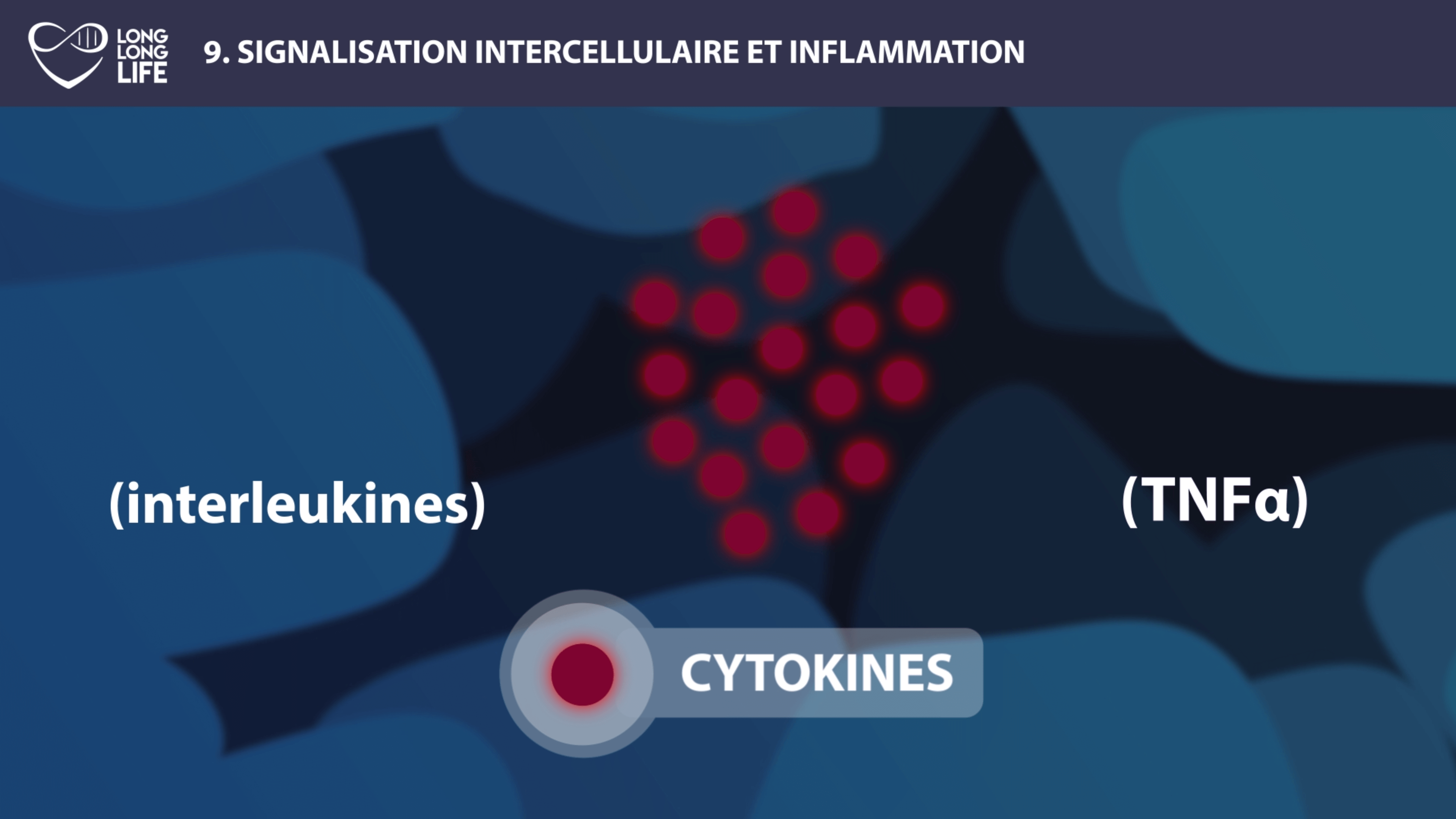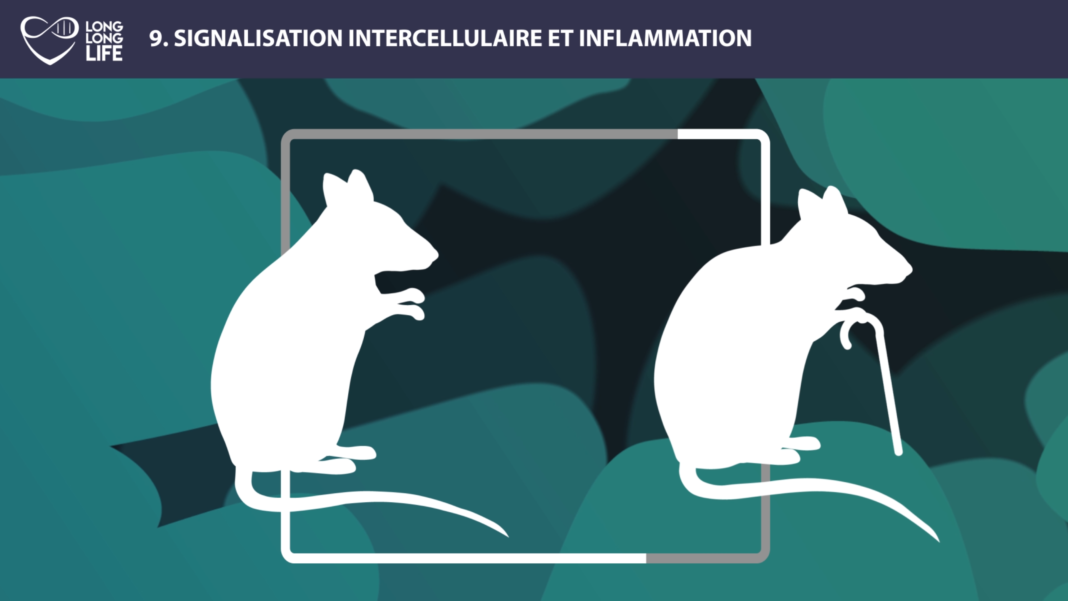Part 9: The 9 causes of aging - Inflammation

To conclude this series on the causes of aging, we will discuss here a ninth identified cause of aging: problems with intercellular signaling and inflammation. Do not hesitate to consult the other causes presented previously right here !
Inflammation: definition
When we talk about inflammation, we must take into account the function of all the cells in our body and the signals they exchange. Each cell is capable, depending on the internal or external stress to which it is subjected, of synthesizing small molecules called cytokines which regulate the inflammatory response. Among the best known, you may be familiar with interleukins or TNFalpha: these cytokines are capable of attaching to receptors present on the surface of our cells and triggering a specific response. This is the case during the activation of the NF-κapaB pathway, a transcription factor which will bind to our DNA and trigger the expression of several genes linked to inflammation.

The stimulation of cytokines therefore leads to a vicious cycle of permanent activation of inflammation. Fortunately, there are also anti-inflammatory molecules that can regulate this phenomenon. With age, however, in addition to greater inflammation, these regulations are less and less effective and this is how we witness the arrival of “inflammaging”, a pro-inflammatory state observed in mammals during aging.
Aging + inflammation = inflammaging
Multiple causes are studied to explain inflammaging, namely: the accumulation of lesions in tissues, which generates pro-inflammatory effects over time, the secretion of pro-inflammatory cytokines by senescent cells, an immune system failing which fails to fight against pathogens effectively, an accumulation of damaged proteins which would lead to an inflammatory reaction, or even a change in the levels of hormones which regulate the production of cytokines... in short for the moment, the potential causes are multiple and unfortunately not all well understood.

In any case, inhibition of NF-κapaB has been proven to result in tissue rejuvenation and prevent features of advanced aging in different mouse models.
Inflammation and sirtuins
Sirtuins, specialized enzymes known to play a role in aging (we talked about them previously), could also influence inflammaging. For example, increasing the activity of SIRTIUNE-1, 2 or 6 would reduce the progression of many inflammatory diseases, because these enzymes inhibit the activity of NF-κapaB on its target genes.
Once again, aging-related inflammation can be interpreted as a defense mechanism that eventually becomes harmful over time. Low levels of inflammatory response would be favorable for tissue repair and regeneration through activation of the immune system; however, higher levels could worsen the lesions.
Reducing inflammation with transfusions
In 2014, scientists demonstrated that young blood could rejuvenate old tissues including the brain in mice, which gave rise to the intergenerational transfusion market in the United States. This may be of interest, but there is no evidence that a few transfusions will make you live longer, particularly because these mouse experiments were carried out by connecting the blood system of a young mouse to that of an older mouse. It is therefore possible that it is also because of the filtering of the blood in the organs of the young mouse that we could observe a rejuvenation of the older mice. For the moment, studies carried out in human volunteers are underway in California by Ambrosia.

What is interesting is that it is now proven that there are factors in the intercellular communication of the mouse, via the blood here, that can control our lifespan and our health. An in-depth study of these factors would allow us to identify them and perhaps one day, to control their concentration in the blood of patients using traditional medicinal methods which would ideally not involve daily infusions.
Conclusion of the series: primary causes, antagonists, and secondary causes
To conclude, the current state of our knowledge allows us to classify the nine causes of aging into three subsections:
First, the primary causes of aging: genetic mutations, telomere shortening, epigenetic alterations and protein misfolding.
Then, the antagonists of aging, these mechanisms initially supposed to protect us, but which ultimately become deleterious: deregulation of the nutrient detection system, dysfunction of mitochondria and cellular senescence.
And finally, the secondary causes of aging which would arise from the first two and amplify their effect: the exhaustion of stem cells as well as problems with intercellular signaling and inflammation.
Research in the field of aging has advanced rapidly in recent years, and it is likely that some things we think we understand today will be proven wrong a decade from now.
Research against aging remains a very complex scientific field, because most of the phenomena we have talked about remain intimately linked with each other, which does not facilitate the unraveling necessary for a detailed understanding of what is really happening in our body.
SOURCES:
Guilhem Velvé Casquillas on http://www.longlonglife.org/

